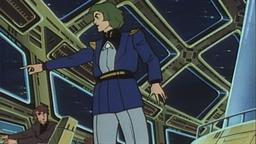

After in-betweening on episodes 5 and 12, he made his debut on episode 19 as a (non-credited) key animator.įor Itano, like for most of his generation, Kanada was probably something of a distant figure he admired and sought to surpass. But his first real opportunity came in 1979, when in-between checker Mamoru Hamatsu invited him to join Sunrise for their new mecha show: Mobile Suit Gundam. Itano quickly went freelance and started working on Leiji Matsumoto space operas: Galaxy Express 999 and Space Battleship Yamato. Itano is the eldest of the three: he was born in 1959, whereas the other two were born in 1960. Although Musashi never was a central actor in anime history, it’s where at least some major figures of the 80s did make their start: Itano started there alongside two other men we’ll meet again later in this piece, Yûji Moriyama and Shôichi Masuo. He began his career as an in-betweener in 1977, at the subcontracting company Studio Musashi, who mostly worked with Sunrise at the time. Let’s begin with Itano himself, who started it all. Rather than just chasing Anno as an individual, I will follow the history of a “studio” he contributed to create: not the very famous Gainax, but the smaller and lesser-known Graviton, which existed from 1984 to 1987. To try to keep a focus in this mess, this essay will center around one of Itano’s most talented and famous students: Hideaki Anno. Second, taking a look at Itano’s students and their career is one of the best routes into the incredibly dense and rich field of the 80s: it’s easy to get lost among the many productions and studios birthed by the OVA boom. First, Itano himself was inspired by Kanada and many animators who followed him often took cues from the Kanada style. While it might seem to steer us a further away from Kanada, taking a look at what I call the “Itano school” is important, for two reasons. One of the most important mechanical and effects animators of the 1980s, Itano revolutionized how SF anime would look, and his students, direct or indirect, scattered all over the industry. And yet, he is never considered a Kanada-style animator, most likely because their styles look very different. This article is part of the Kanada school series.Īmong all the artists influenced by Yoshinori Kanada, Ichirô Itano is probably one of the most important. PAGES WILL BE DELETED OTHERWISE IF THEY ARE MISSING BASIC MARKUP.Cover image: a Pop Chaser illustration by Hideaki Anno DON'T MAKE PAGES MANUALLY UNLESS A TEMPLATE IS BROKEN, AND REPORT IT THAT IS THE CASE. THIS SHOULD BE WORKING NOW, REPORT ANY ISSUES TO Janna2000, SelfCloak or RRabbit42. The Trope workshop specific templates can then be removed and it will be regarded as a regular trope page after being moved to the Main namespace. All new trope pages will be made with the "Trope Workshop" found on the "Troper Tools" menu and worked on until they have at least three examples.Pages that don't do this will be subject to deletion, with or without explanation. All new pages should use the preloadable templates feature on the edit page to add the appropriate basic page markup.

All images MUST now have proper attribution, those who neglect to assign at least the "fair use" licensing to an image may have it deleted.Failure to do so may result in deletion of contributions and blocks of users who refuse to learn to do so.
#SPACE RUNAWAY IDEON TROPE MANUAL#


 0 kommentar(er)
0 kommentar(er)
